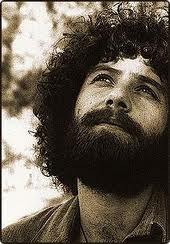Caterpillar to Butterfly: Having Church Property– TO – No Need For Church Property
 From Caterpillar to Cocoon to Butterfly – Part XIII
From Caterpillar to Cocoon to Butterfly – Part XIII
In this series we have been asking the question, “What happens with metamorphosis during the cocoon stage?” How, structurally, do you get a butterfly from what once was a caterpillar? In my Aug. 20, 2011’s blog, I listed several forms of transformation that I see occurring inside the cocoon of change for the church. Today we will look at the principle: From Owning all church property (caterpillar) TO Has no need for church property (butterfly).
 Caterpillar: In its hay days, the church built cathedrals, supposedly monuments to their faith but at a drastic cost to its constituents. Today, the church still builds mega-structures at a huge cost to their constituents. Buildings and Grounds and their maintenance occupies a large part of most church budgets. As buildings age and congregations dwindled, especially in urban America where entire communities built around church buildings are crumbling under economic conditions, slums are birthed. Buildings often become albatrosses tied around a congregation’s neck when they become aged, huge, old, in need of repair, and empty and the congregation does not have the needed financial resources any more. Those hallowed halls may be filled with history, but are empty of people, but strapped financially. The building often becomes the center of focus, which we even call the “church”, for we attend “church” in a building. It even becomes central to church activities and church life.
Caterpillar: In its hay days, the church built cathedrals, supposedly monuments to their faith but at a drastic cost to its constituents. Today, the church still builds mega-structures at a huge cost to their constituents. Buildings and Grounds and their maintenance occupies a large part of most church budgets. As buildings age and congregations dwindled, especially in urban America where entire communities built around church buildings are crumbling under economic conditions, slums are birthed. Buildings often become albatrosses tied around a congregation’s neck when they become aged, huge, old, in need of repair, and empty and the congregation does not have the needed financial resources any more. Those hallowed halls may be filled with history, but are empty of people, but strapped financially. The building often becomes the center of focus, which we even call the “church”, for we attend “church” in a building. It even becomes central to church activities and church life.
 Butterfly: Relationships are important, not physical facilities. Relationships are not built around physical building, but in individuals meeting, communicating, and networking with one another. In the past social life developed around the church building and its activities. In the future it could revolve around the culture where the church, the people who believe in Jesus Christ, live and are active. Church will be fused more with community and local culture. Church could meet in Starbucks because that is where their people drink coffee (with out “doing” church by producing a church service there). It could meet in the park by the swing sets, at the grocery store, at school, work, etc. Any place god’s people are, where Christians hang out, technically that is where the “church” is meeting. It is built on relationships, not location nor buildings.
Butterfly: Relationships are important, not physical facilities. Relationships are not built around physical building, but in individuals meeting, communicating, and networking with one another. In the past social life developed around the church building and its activities. In the future it could revolve around the culture where the church, the people who believe in Jesus Christ, live and are active. Church will be fused more with community and local culture. Church could meet in Starbucks because that is where their people drink coffee (with out “doing” church by producing a church service there). It could meet in the park by the swing sets, at the grocery store, at school, work, etc. Any place god’s people are, where Christians hang out, technically that is where the “church” is meeting. It is built on relationships, not location nor buildings.
 The Differences: In the past, much of the church’s financial resources turned toward building projects, magnificent cathedrals throughout Europe, beautiful architectural mega-churches in the United States, etc. As buildings age, their financial demands for maintenance can strap the financial resources of the church, those Christian individuals who meet there, and become an albatross around their necks, eventually forcing them to close their doors or sell their facility. On the other hand, if the church is built on relationships among its believers in Jesus Christ, technically, a stationary building is not needed. All one needs are “two or more” believers in Jesus Christ to gather, hang out, communicate, and you got Church.
The Differences: In the past, much of the church’s financial resources turned toward building projects, magnificent cathedrals throughout Europe, beautiful architectural mega-churches in the United States, etc. As buildings age, their financial demands for maintenance can strap the financial resources of the church, those Christian individuals who meet there, and become an albatross around their necks, eventually forcing them to close their doors or sell their facility. On the other hand, if the church is built on relationships among its believers in Jesus Christ, technically, a stationary building is not needed. All one needs are “two or more” believers in Jesus Christ to gather, hang out, communicate, and you got Church.
 Implications Today: Personally, I have seen where a denominational church office threatened to take away the land and building of a local congregation over heated controversies, because in their charter, the denominations technically owns the building, not the local constituents. Eventually the denomination backed down, but the ugly head of pyramidal, hierarchal “control” raised its political head. Many churches today face huge mortgages and paying staff and benefits as the majority of their budget. I have seen mega-churches build facilities, only to see them emptied in a flick of the eye when a scandal hit their staff or their pastor falls, now leaving those who faithfully remain to face a difficult financial dilemma.
Implications Today: Personally, I have seen where a denominational church office threatened to take away the land and building of a local congregation over heated controversies, because in their charter, the denominations technically owns the building, not the local constituents. Eventually the denomination backed down, but the ugly head of pyramidal, hierarchal “control” raised its political head. Many churches today face huge mortgages and paying staff and benefits as the majority of their budget. I have seen mega-churches build facilities, only to see them emptied in a flick of the eye when a scandal hit their staff or their pastor falls, now leaving those who faithfully remain to face a difficult financial dilemma.
The best example of the church currently built on relationships rather than real estate is the underground church in China, where they can get arrested when relationally meeting together in a house, in a barn, in a park, wherever. The communist party dos not want unauthorized groups to meet; they know the power of assembly. In China there is an pyramidal, hierarchal, institutional church sanction by the pyramidal, hierarchal, political institution that is allowed to build buildings if approved, but it is a known fact that there is very little spiritual life in that setting. On the other hand, the church built on relationships, anywhere they can meet, usually hiding in safety, is a vibrant, Spirit led church filled with spiritual life. In order to understand this phenomenon, we need to look to the underground Church in China to give us Westerners advice in how to live in community of faith and relationships.
 Conclusion: God has never requested any permanent structure to be built in his honor; His structures were always moveable as His Spirit moved. He wanted a mobile tabernacle that could move whenever He chose His Spirit to move or to stay, but the Jews built a permanent structure, the Temple. In fact they have build several of them, but all have been destroyed Today there is no physical temple on the Temple Mount in Jerusalem, only an empty grave at its base. Paul preached, “Do you not know that your bodies are the temple of the Holy Spirit?” God has chosen mobility, humans who believe in Jesus Christ, for His place of occupancy, not permanent built structures that decay and someday lay in ruin if not maintained. If the Church is to be fluid, to be mobile, to be penetrating cultures throughout the world, them MUST be built on relationships, not physical structures. Bottom line: ownership identifies control. When the church “owns” structure, they seek to control them. When the church again realized they were bought with a price, Jesus’ blood, that they are now under his ownership, then they will head more to the leading of the Spirit of Jesus Christ, the Holy Spirit, and be free to minister through relationships. What is your religious life wrapped around, the building you call “church” or the relationship with those who meet at not only that location, but also at the mall, the grocery store, the park, etc.? That is the mindset of the butterfly, ready to soar in flight, not tied down by any cumbersome structure.
Conclusion: God has never requested any permanent structure to be built in his honor; His structures were always moveable as His Spirit moved. He wanted a mobile tabernacle that could move whenever He chose His Spirit to move or to stay, but the Jews built a permanent structure, the Temple. In fact they have build several of them, but all have been destroyed Today there is no physical temple on the Temple Mount in Jerusalem, only an empty grave at its base. Paul preached, “Do you not know that your bodies are the temple of the Holy Spirit?” God has chosen mobility, humans who believe in Jesus Christ, for His place of occupancy, not permanent built structures that decay and someday lay in ruin if not maintained. If the Church is to be fluid, to be mobile, to be penetrating cultures throughout the world, them MUST be built on relationships, not physical structures. Bottom line: ownership identifies control. When the church “owns” structure, they seek to control them. When the church again realized they were bought with a price, Jesus’ blood, that they are now under his ownership, then they will head more to the leading of the Spirit of Jesus Christ, the Holy Spirit, and be free to minister through relationships. What is your religious life wrapped around, the building you call “church” or the relationship with those who meet at not only that location, but also at the mall, the grocery store, the park, etc.? That is the mindset of the butterfly, ready to soar in flight, not tied down by any cumbersome structure.



















































































